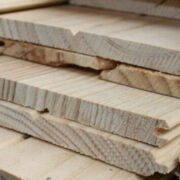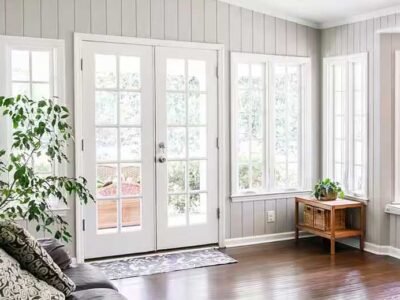Hardwood floor refinishing is a process of restoring the original beauty of an old hardwood floor. It involves sanding, filling any gaps and cracks in the wood, and then applying a finish to protect the floor from further damage. The process can be done by professionals or homeowners who are willing to take on the challenge. Floor refinishing in Ottawa can bring back its original lustre and shine, creating a beautiful new look for any home. During the refinishing process, dust particles may escape, so it’s important to wear protective clothing and masks when working with these materials. Additionally, if you’re undertaking this project yourself, make sure you have all the necessary tools and supplies needed to complete it safely and successfully.
Refinishing an old hardwood floor eliminates any gaps or cracks, which can be unsightly and lead to further damage. Additionally, refinishing your old hardwood floors provides additional protection against wear and tear, as well as moisture that can cause the wood to warp or crack over time. Finally, refinishing your old hardwood floors is relatively inexpensive when compared to replacing them entirely, making it a cost-effective way to improve the look of your home.
Cleaning the Floor
Cleaning old hardwood floors is crucial before refinishing. Start by vacuuming the area to pick up any dirt and debris. If there are gaps between planks or boards, use a soft brush attachment on the vacuum to get into those areas. After vacuuming, you can use a damp mop with warm water and a bit of mild detergent to clean the entire floor. This will help lift any remaining dirt and stains that may have built up over time.
Inspecting for Damage or Imperfections in the Wood
Before refinishing old hardwood floors, it’s important to inspect the wood for any damage or imperfections. Check each board for cracks, chips, splinters, warps, and other types of damage that may need repair. Look closely between planks and boards to determine if there are any gaps, as these will need to be filled with epoxy putty before sanding and refinishing. Additionally, check the floor for evidence of water damage or rot. If you find any of these issues, they must be addressed before proceeding with the refinishing process. Finally, take note of any discoloration or staining on the wood so that you can match it when selecting a new finish colour.
Repairing Cracks, Gaps, and Other Issues with Filler Compound
To repair cracks, gaps, and other issues in hardwood floors before refinishing, it’s important to use a filler compound. These compounds are available in both premixed and powder forms. First, clean the area around the crack or gap with a vacuum cleaner and then dust it off to ensure that no dirt or debris is left behind. Next, mix the filler compound according to the manufacturer’s instructions. Apply the mixture to any cracks or gaps using an applicator tool. Allow time for the mixture to dry thoroughly before sanding down any excess material. Finally, depending on the type of finish you have selected for your flooring project, apply a sealer over the repaired areas for protection.
Sanding the Floor to Prepare it for Staining or Sealing
Sanding the floor is an important step in preparing it for staining or sealing. To begin, use a belt sander to remove any existing finish and smooth out any imperfections. Next, use fine-grit sandpaper to further smooth the surface of the wood. This will help ensure that the stain or sealant adheres properly. Before applying the desired finish, vacuum and dust the floor to remove any residual dust particles left over from sanding. Finally, test a small area of the floor with your chosen stain or sealant before proceeding with the entire project to ensure you get the desired results.
Applying a Stain or Sealant to the Floor
Once the floor has been sanded and prepared, it’s time to apply a stain or sealant. Start by lightly brushing on an even coat of your chosen product with a paintbrush. Give it time to dry before applying a second coat. To ensure an even application, use a foam brush or roller to spread out any excess product and create a smooth finish. Once the final coat is complete, allow the floor to dry completely before walking on it or adding furniture back in place.
Choosing the Right Stain or Sealant for your Project
When it comes to choosing the right stain or sealant for refinishing your hardwood floors, there are a few important things to consider. The type of stain or sealant you choose should be determined by the current condition of your floor and the desired outcome. For floors that have minimal damage, a polyurethane sealer is often the best choice as it will protect the wood and provide a glossy finish. For floors with more damage, such as deep scratches or gaps between boards, an oil-based stain may be better suited to both cover up any imperfections and bring out the natural beauty of the wood. It’s also important to take into account how much wear and tear your floor will be exposed to after refinishing; if it will see frequent traffic from children or pets, consider using a product that is designed for high durability. Overall, taking time to research and select the right stain or sealant for your project can make all the difference in achieving professional-looking results.
Applying a Dark Stain if Desired
For those who wish to add a darker hue to their hardwood floor, applying a dark stain is an option. Staining will not only change the colour of the wood but can also help to mask any imperfections or enhance the grain pattern. Before beginning, it’s important to make sure that the wood is properly sanded and clean of any dirt or dust. Once this has been done, apply a coat of pre-stain conditioner if needed; this will help ensure even absorption of the stain. When ready to apply the stain, use a brush or pad applicator in long strokes across the boards; be sure to wipe off any excess before it has a chance to dry. After staining your floor, use an appropriate sealant for added protection from wear and tear.
Finishing Touches: Polishing and Buffing the Floor
Once the stain has been applied and dried completely, it’s time to finish your hardwood floor with a few finishing touches. Polishing and buffing can help bring out the natural beauty of the wood and make your finished project shine. To get started, use a buffer with a soft cloth to gently buff the surface of the floor in long strokes. This will help remove imperfections, scratches, and dull spots for a smooth finish. Once you have finished buffing, use a polisher or wax to seal in the colour and protect your floors from further damage. Allow the polish or wax to dry for about half an hour before walking on it; this will ensure that it is properly sealed.
Conclusion
Overall, refinishing old hardwood floors with gaps can be a daunting task. It is important to take necessary steps to prevent moisture buildup from spills or water leaks, as this can cause further damage and deterioration of the floorboards. Taking the time to regularly inspect for potential sources of water damage in your home and cleaning up any spills or leaks quickly will keep your hardwood floors looking great for years to come!

















Comments